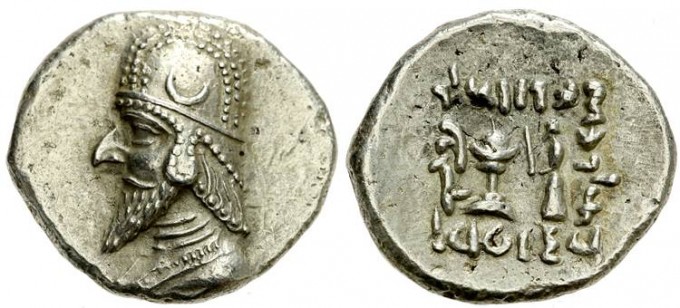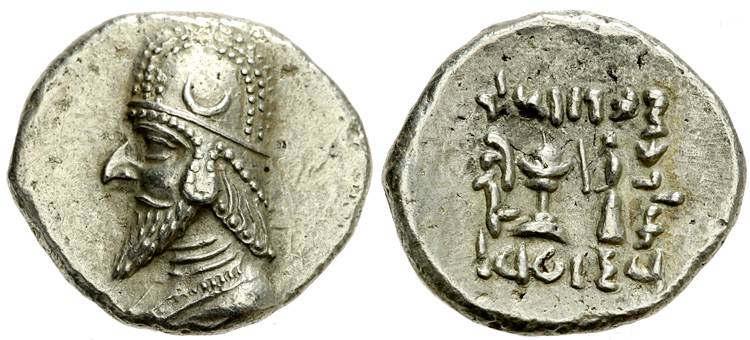The Prince and the Pancratiast: Persian-Thessalian Relations in the Late Fifth Century B.C.
By John O. Hyland
Greek, Roman and Byzantine Studies, Vol 55, No 2 (2015)
Abstract: Darius II’s invitation to the Olympic victor Poulydamas and Cyrus’ friendship with Thessalian aristocrats were renewals of old ties between Persia and Thessaly and part of Persian intervention in the Peloponnesian War.

Introduction: Near the end of the fifth century B.C. the famous Thessalian pancratiast Poulydamas of Skotoussa traveled to the Achaemenid court at the invitation of Darius II. Scholars have noted the visit as an instance of cultural interaction, but Persia’s simultaneous involvement in the Peloponnesian War suggests the possibility of diplomatic overtones. A political purpose for Poulydamas’ travel would be especially attractive given the subsequent cooperation between Darius’ son, Cyrus the Younger, and a cabal of Thessalian guest-friends. These episodes may be linked as successive steps in the restoration of the old xenia between Xerxes and Thessalian leaders, dormant since 479. By examining what Persian and Thessalian elites stood to gain from renewing their old partnership, we can shed new light on an under-appreciated dimension of GraecoPersian political relations.

Poulydamas’ victory at the Olympic games of 408 made him a living legend in Greece, a strongman comparable to Herakles (Paus. 6.5.1–9). Plato’s Republic testifies to his fame outside of Thessaly in the first half of the fourth century, citing him as the quintessential example of human bodily strength (338C), and by the time of Alexander’s conquests, no less an artist than Lysippos sculpted his statue for a monument at Olympia. A fragment of Diodorus mentions him in the same breath as the great Milo of Croton (9.14–15), and Lucian alludes to cult honors at the Olympic site in the second century A.D.

 The surviving portion of the Olympic base relief (second half of the fourth century B.C.) celebrates Poulydamas’ court visit as a demonstration of Greek might in the face of the Great King. It mocks the solemnity of the Achaemenid royal audience: the enthroned Darius seizes his head and gesticulates wildly; the feet of a helpless Persian dangle in mid air; and Poulydamas turns his back to the King while preparing to throw his victim. Pausanias explains the scene:
The surviving portion of the Olympic base relief (second half of the fourth century B.C.) celebrates Poulydamas’ court visit as a demonstration of Greek might in the face of the Great King. It mocks the solemnity of the Achaemenid royal audience: the enthroned Darius seizes his head and gesticulates wildly; the feet of a helpless Persian dangle in mid air; and Poulydamas turns his back to the King while preparing to throw his victim. Pausanias explains the scene:
Darius, the bastard son of Artaxerxes, who with the support of the Persian demos put down Sogdius, the legitimate son of Artaxerxes, and ascended the throne in his stead, learning when he was king of the exploits of Poulydamas, sent messengers with the promise of gifts and persuaded him to come before his eyes at Susa. There he challenged three of the Persians called Immortals to fight him—one against three—and killed them.
Click here to read this article from Duke University
Sponsored Content


The Prince and the Pancratiast: Persian-Thessalian Relations in the Late Fifth Century B.C.
By John O. Hyland
Greek, Roman and Byzantine Studies, Vol 55, No 2 (2015)
Abstract: Darius II’s invitation to the Olympic victor Poulydamas and Cyrus’ friendship with Thessalian aristocrats were renewals of old ties between Persia and Thessaly and part of Persian intervention in the Peloponnesian War.
Introduction: Near the end of the fifth century B.C. the famous Thessalian pancratiast Poulydamas of Skotoussa traveled to the Achaemenid court at the invitation of Darius II. Scholars have noted the visit as an instance of cultural interaction, but Persia’s simultaneous involvement in the Peloponnesian War suggests the possibility of diplomatic overtones. A political purpose for Poulydamas’ travel would be especially attractive given the subsequent cooperation between Darius’ son, Cyrus the Younger, and a cabal of Thessalian guest-friends. These episodes may be linked as successive steps in the restoration of the old xenia between Xerxes and Thessalian leaders, dormant since 479. By examining what Persian and Thessalian elites stood to gain from renewing their old partnership, we can shed new light on an under-appreciated dimension of GraecoPersian political relations.
Poulydamas’ victory at the Olympic games of 408 made him a living legend in Greece, a strongman comparable to Herakles (Paus. 6.5.1–9). Plato’s Republic testifies to his fame outside of Thessaly in the first half of the fourth century, citing him as the quintessential example of human bodily strength (338C), and by the time of Alexander’s conquests, no less an artist than Lysippos sculpted his statue for a monument at Olympia. A fragment of Diodorus mentions him in the same breath as the great Milo of Croton (9.14–15), and Lucian alludes to cult honors at the Olympic site in the second century A.D.
Darius, the bastard son of Artaxerxes, who with the support of the Persian demos put down Sogdius, the legitimate son of Artaxerxes, and ascended the throne in his stead, learning when he was king of the exploits of Poulydamas, sent messengers with the promise of gifts and persuaded him to come before his eyes at Susa. There he challenged three of the Persians called Immortals to fight him—one against three—and killed them.
Click here to read this article from Duke University
Sponsored Content